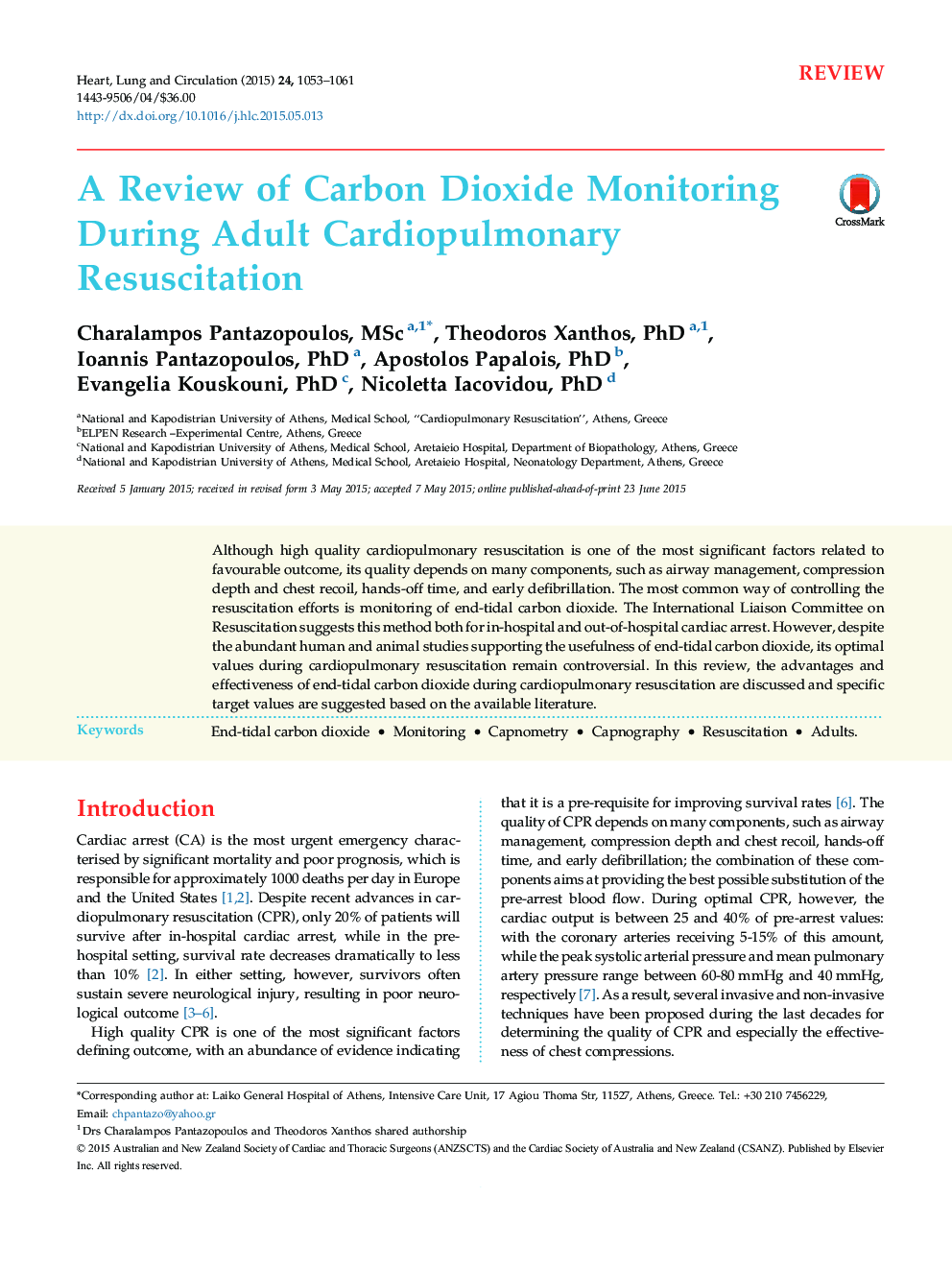| Article ID | Journal | Published Year | Pages | File Type |
|---|---|---|---|---|
| 2917378 | Heart, Lung and Circulation | 2015 | 9 Pages |
Although high quality cardiopulmonary resuscitation is one of the most significant factors related to favourable outcome, its quality depends on many components, such as airway management, compression depth and chest recoil, hands-off time, and early defibrillation. The most common way of controlling the resuscitation efforts is monitoring of end-tidal carbon dioxide. The International Liaison Committee on Resuscitation suggests this method both for in-hospital and out-of-hospital cardiac arrest. However, despite the abundant human and animal studies supporting the usefulness of end-tidal carbon dioxide, its optimal values during cardiopulmonary resuscitation remain controversial. In this review, the advantages and effectiveness of end-tidal carbon dioxide during cardiopulmonary resuscitation are discussed and specific target values are suggested based on the available literature.
